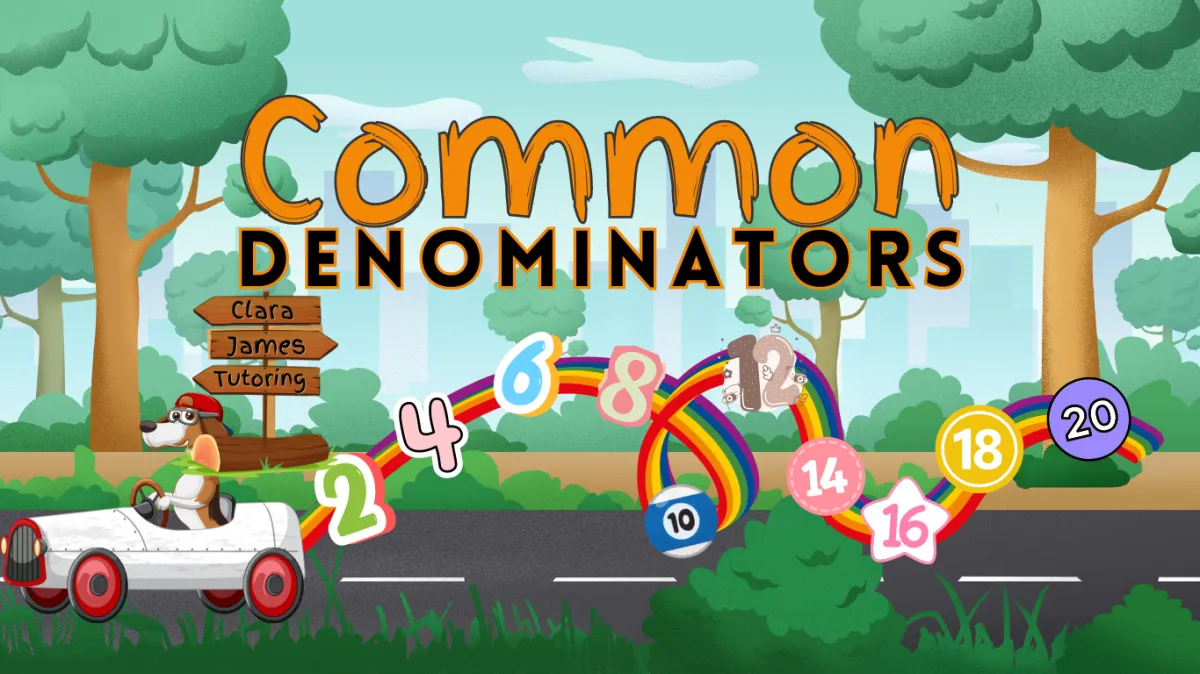Clara James Franchise
BLOG POSTS

Common Denominators
Common denominator: when the numbers at the bottom of the fraction are the same
I was working with a family the other day, and she was saying that her son had been doing fractions for his homework and she’d had to look up what an integer was.
So, I hope this (very short) glossary helps:
Integer: whole number
Denominator: the number at the bottom of the fraction
Numerator: the number at the top of the fraction
Common denominator: when the numbers at the bottom of the fraction are the same.
If you have common denominators and you are asked to add the fraction, it becomes as simple as just adding the top numbers together, the bottom numbers stay the same.
It’s a bit like saying, I have a cake cut into 8 pieces (that’s the bottom number, the denominator).
You take 2 pieces and I take1 piece. The number of pieces we each take are the numerators. So, how many pieces did we take altogether? 2+1 =3
So, our answer will be 3/8 Three out of the 8 pieces have been taken.
It’s the same with subtracting. If we again have a cake that has been cut into 8 pieces, By the time I get to the table, you have again taken 2 pieces, so we have 6/8 pieces left.
When the cake was whole, we had 8 pieces, you took 2, this left us with 6 out of the 8 pieces, which as a fraction would be written as 6/8.
I then come along and take1 piece. (The number of pieces we each take are the numerators).
So, how many pieces that are left now is 6/8 – 1/8 = 5/8.
I hope that makes sense and I’m not just waffling...

Our goal at Clara James Tutoring is to make learning fun and accessible to everyone. If children are engaged in what they are doing they are more likely to want to participate, if they are enjoying it, they are more likely to relax and retain the information.
If they are retaining the information it will help boost their knowledge and with knowledge comes confidence.
If you have a child who enjoys learning through games and being more creative, and you enjoy spending time with them, you might be interested in the Clara James Approach, the membership group we have put together to support you in supporting your primary school aged child with their maths and English.
Interested?
Click here to learn more: The Clara James Approach

